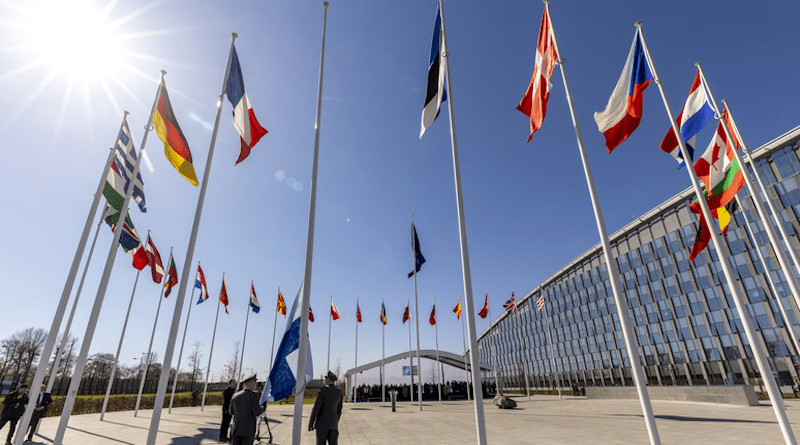Finland Likely To Tread Cautiously Despite NATO Membership – Analysis
It has had a complicated relationship with Russia, being pulled in opposite directions by geographical proximity on the one hand and a passion for independence on the other.
Breaking loose from Russia’s orbit after a long though low-key struggle, Finland joined NATO on Tuesday. The rupture is not surprising given the history of asymmetrical relations between the two countries.
However, Finland-Russia watchers do not anticipate belligerency in Helsinki’s relations with Moscow except in the unlikely event of a Russian invasion of Finland. Finland has had a complicated relationship with Russia, being pulled in opposite directions by geographical proximity on the one hand, and a passion for independence on the other.
The restraint expected of Finland could be explained by the fact that Finland was never annexed by the USSR, in contrast to other countries on the Russian border such as Ukraine and the Baltic States of Estonia, Latvia and Lithuania.
Ukraine was made part of the USSR in 1922 and the Baltic States were absorbed by the USSR in 1940. No wonder the Baltic States, wanting to throw off the Russian yoke, joined NATO with alacrity after the collapse of the USSR in 1991. And Ukraine was on the verge doing so in 2022. But Russia attacked it and thwarted the move.
Traditionally, Russo-Finnish relations had been troubled, but mostly manageable thanks to regular consultations at the top levels. The relationship would have been more or less on an even keel if only the Russians had not invaded Ukraine in 2022. That was a defining moment for the Finns, who fearing the worst, accelerated moves to defect from “neutrality” to a Western military alliance.
Historical Background
In the 20th century, Finland had made several efforts to curb Soviet expansionism. When war clouds were gathering over Europe in the 1930s, Finland was working on an alliance with Poland and the Baltic States. A deal with Sweden was also attempted. But both moves failed. After World War II broke out, Finland turned to Hitler’s Germany for military assistance to keep the Soviets at bay. It succeeded in this venture for a while. But when the USSR was winning against Nazi Germany, Finland’s position became extremely vulnerable. But Stalin was more keen on crushing Hitler with all his means than occupying Finland. He decided to enter into a truce with Finland. Thus Finland was able to avoid the bear hug and remain free and “neutral”.
In the Cold War years, Finland was able to resist Western and Soviet pressure to toe their respective lines though it had signed a neutrality Treaty with the USSR in 1947.
Henri Vanhanen, a Research Fellow at the Finnish Institute for International Affairs, writes in his paper on Russo-Finnish relations, that frequent conversations between the Presidents of Finland and Russia and twice-a-year visits, enabled Helsinki to accurately read the Russian mind and take appropriate decisions. And the West also gained from these interactions as the Finns were good sources of information on the Russian mind.
When the USSR folded up in 1991, Finland defied the 1947 agreement and replaced its Soviet MiG fighters with American F-18 Hornets. It also joined NATO’s Partnership for Peace program in 1994 and the European Union in 1995.
As Henri Vanhanen wrote: ” Finland focused on defense material procurement from the West for all military domains (such as joint air-to-surface standoff missiles, Stinger missiles, guided multiple launch rocket systems, and, most recently, the purchase of 64 F-35 fighter aircraft to replace its fleet of F-18 Hornets), integration into NATO standards, and participation in NATO’s crisis management operations overseas, including the Resolute Support Operation in Afghanistan, KFOR in Kosovo, and NATO training operation in Iraq.”
“The experience and lessons learned throughout these years enabled Finland to deepen its ties with the alliance, making Finland perhaps more NATO interoperable than many member states.”
But still, Finland could not take the drastic decision to join the Western alliance fully by signing up with NATO. Vanhanen quotes the former Finnish President Mauno Koivisto who said that Finland was still restrained by the need to “survive”. The practical option was to meet the lurking danger from Russia without going to war.
But the tipping point came in 2022, when an aggressive Vladimir Putin, in a sustained bid to revive Imperial Russia’s revanchist credo, tried to absorb Ukraine in a swift military move. In the eyes of the Finns, Russia was no longer a potential threat but an existential threat.
Finland decided to change its Russia policy in February 2022. In May, it decided to apply for NATO membership. In January 2023, President Sauli Niinisto compared Putin to Stalin.
On the ground, Finland sent lethal weapons to Ukraine openly challenging Russia. It almost completely closed the Russo-Finnish border. Gas dependency was ended. The Russian Ambassador to Finland was not invited to the President’s annual Independence Day reception in December 2022, Vanhahen recalls.
However, certain geopolitical realities cannot be brushed under the carpet in fashioning a new foreign and defense policy for Finland. Finland cannot overlook its 1340 km border with Russia. One might point out that the Baltic States also have long borders with Russia, but they have unreservedly thrown their lot with NATO. But Finland is a different kettle of fish. It has traditionally wished and striven to be neutral and independent, though not always successfully. Hence, Helsinki is likely to tread cautiously, despite casting its lot with NATO in a deliberate well-calculated move.

